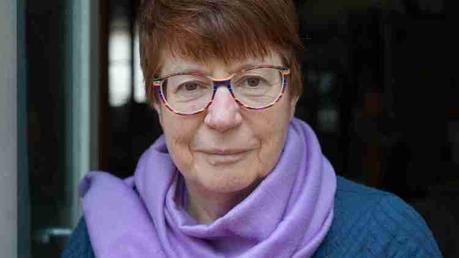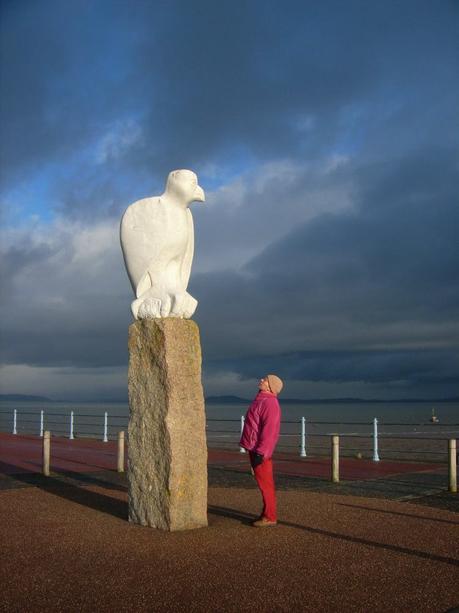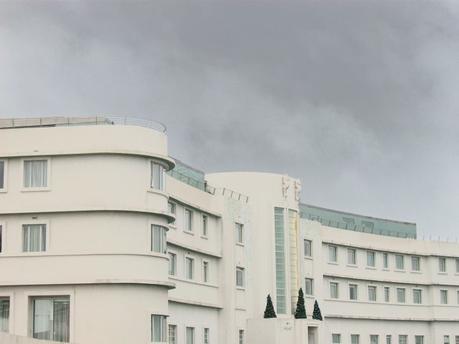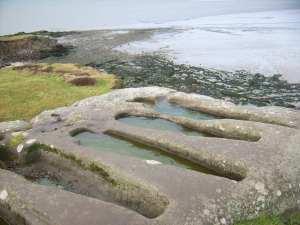To day I’m pleased to introduce my final guest of 2020 and the last of this year’s Writers on Location, Cath Barton. The UK has made only infrequent appearances in this long-running series, but the north-west of England gets a moment in her post on the coastal town of Morecambe in Lancashire. There’s something I found surprising about Cath’s experience of the setting for her second novella In the Sweep of the Bay, a tiny book which made a big impression on me, as you’ll see in my review at the end:
day I’m pleased to introduce my final guest of 2020 and the last of this year’s Writers on Location, Cath Barton. The UK has made only infrequent appearances in this long-running series, but the north-west of England gets a moment in her post on the coastal town of Morecambe in Lancashire. There’s something I found surprising about Cath’s experience of the setting for her second novella In the Sweep of the Bay, a tiny book which made a big impression on me, as you’ll see in my review at the end:
I have, over the years, traveled from time to time on one or other of the north-south routes through Lancashire. At the beginning of my novella In the Sweep of the Bay I describe them as ‘the twin skeins of motorway and railway which lie on the land like wool on a giant’s knitting needles.’ But until ten years ago I had not deviated from those routes to venture to the west into the sweep of Morecambe Bay.

We took another train on the short journey to Morecambe and walked to the sea front, with its wide vista over to the southern Lakeland Fells. The first snows of winter had fallen on those distant hills. Between us and them, the gulls, terns and wading birds lifted and swooped. It is not just Eric Morecambe who is commemorated slightly larger than life-size: there are dramatic artworks celebrating the birds of the Bay too and we took pictures of one another with the bird sculptures.

In the neighbouring village of Heysham there are Viking graves, eight body-shaped open tombs hewn out of the rock above the shore. They probably date back to the tenth century. Out there on the windswept headland I felt a connection with history. We took a bus back to Morecambe. It was dusk, the windows of the bus were dirty, and I couldn’t get a good photograph across the Bay.
My story about Ted and Rene having lunch at that seafront café was originally a piece of flash fiction. I wrote other flashes – one was set in the Midland Hotel, another about the street sweeper who looked after the statue of Eric Morecambe and took photographs of visitors, if they asked him to do so. I included little things that stood out in my memory from that day trip – the brightly-coloured gerberas on the tables in the Midland Hotel, the pictures of old Morecambe on the walls of the lunchtime café. The Viking graves get a mention too. The memories are like bursts of energy which set me thinking about the wider story of Ted and Rene.

As I fleshed out the years of Ted and Rene’s marriage my vivid memory of our day trip to Morecambe provided fuel for the story. The Midland Hotel became pivotal in the development of the parallel and interwoven story of Vicenzo, a young Italian man who comes to work there. And he has a connection with the dance halls too, but I won’t give away the whole story. I haven’t been back to Morecambe, yet. But return I will, and when I do I hope that I can stay – with my husband – in the Midland Hotel, in a sea view room looking over the Bay. And I fully expect that as we walk along the front I will see out of the corner of my eye, or feel not far away, the ghosts of Ted and Rene.

IN BRIEF: My View of In the Sweep of the Bay
This poignant novella has the feel of Revolutionary Road in a northern town and the outsize power of Mothering Sunday. I could just stop at this quote I gave for the back cover – recommendations don’t come much higher – but will add that like those two works, In the Sweep of the Bay has an impact that barely seems possible for something which only takes a few hours to read. On both of my readings, many (and not just any) months apart, I was deeply affected by its perceptiveness and beauty of expression. This is the portrait of a marriage sealed at a time when women expected little and often got even less, but when men too were constrained by gender roles, emotional repression and stifling social expectations. But on reflection, it has striking wider relevance, to the timeless issues of communication and authenticity in intimate relationships, and the difficulty of reconciling desire (of all kinds) and temptation with the inevitable familiarity of commitment and routine. Another exceptional discovery from independent publisher Louise Walters Books.
You can find this title and many others featured on the Literary Sofa in my selection on bookshop.org, where purchases support independent booksellers.
*POSTSCRIPT*
Do join me next week to hear about my 12 personal favorite Books of 2020 – a post I always look forward to!

